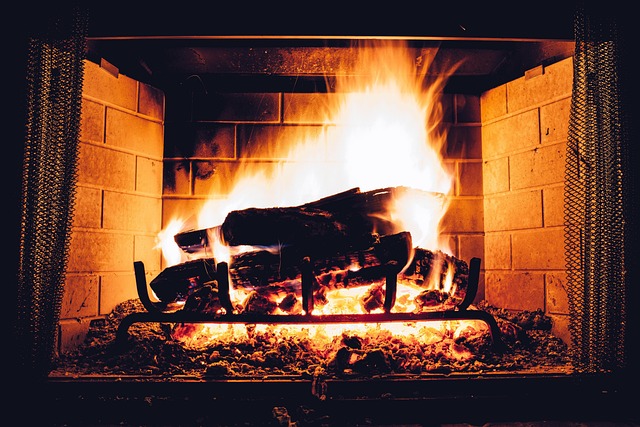Wood Stoves: Efficient Home Heating with Traditional Charm
Wood stoves have been a reliable source of home heating for centuries, combining practicality with a touch of rustic appeal. Today, these appliances continue to offer numerous benefits for homeowners seeking efficient and environmentally conscious heating solutions. This article explores the advantages of wood stoves, their environmental impact, and essential maintenance tips to ensure long-lasting performance.

Why choose a wood stove for home heating?
Opting for a wood stove as your primary or supplementary heating source comes with several compelling reasons. Firstly, wood stoves provide excellent heat output, capable of warming large spaces efficiently. Unlike central heating systems, wood stoves allow for zone heating, focusing warmth where it’s needed most and potentially reducing overall energy consumption.
Wood stoves also offer a degree of energy independence. By relying on locally sourced wood, homeowners can reduce their dependence on utility companies and fossil fuels. This can be particularly advantageous during power outages or in remote areas where other heating options may be limited or unreliable.
Additionally, many find the ambiance created by a wood stove to be unmatched. The crackling sound of burning wood and the warm, flickering light can create a cozy atmosphere that enhances the comfort of any home.
The benefits of heating with a wood stove
One of the primary benefits of using a wood stove is cost-effectiveness. While the initial investment in a quality wood stove can be significant, the long-term savings on heating bills can be substantial, especially in areas where wood is readily available and affordable.
Wood stoves also provide a renewable heating option. As trees can be replanted and regrown, wood is considered a renewable resource when harvested sustainably. This aspect appeals to those looking to reduce their carbon footprint and reliance on non-renewable energy sources.
Furthermore, modern wood stoves are designed with high efficiency in mind. Many models boast efficiency ratings of 70% or higher, meaning they convert a large portion of the wood’s energy into usable heat. This efficiency translates to less wood consumption and reduced emissions compared to older models or open fireplaces.
Maintenance tips for long-lasting wood stoves
To ensure your wood stove remains safe, efficient, and durable, regular maintenance is essential. Start by cleaning the stove and chimney at least once a year, preferably before the heating season begins. This removes creosote buildup, which can lead to chimney fires if left unchecked.
Inspect the door gaskets regularly and replace them when they show signs of wear. Proper sealing is crucial for controlling airflow and maintaining efficiency. Additionally, check for any cracks or damage to the stove’s body or components, addressing issues promptly to prevent further deterioration.
Use only seasoned hardwood in your stove. Unseasoned or “green” wood burns inefficiently and produces more smoke and creosote. Properly seasoned wood should have a moisture content of 20% or less.
Dispose of ashes regularly, but always in a safe manner. Hot ashes can retain heat for days, so use a metal container and store it away from combustible materials.
Are wood stoves environmentally friendly?
The environmental impact of wood stoves is a topic of ongoing debate. On one hand, burning wood releases carbon dioxide, a greenhouse gas. However, proponents argue that this carbon was recently absorbed by the tree during its growth, making it part of a short-term carbon cycle unlike fossil fuels.
Modern EPA-certified wood stoves have significantly reduced emissions compared to older models. These stoves are designed to burn wood more completely, resulting in less smoke and particulate matter released into the atmosphere.
The environmental friendliness of a wood stove also depends on factors such as the source of the wood and the efficiency of the stove. Using locally sourced, sustainably harvested wood in a high-efficiency stove can be a relatively low-impact heating option.
However, in urban areas with air quality concerns, the cumulative effect of multiple wood stoves can contribute to pollution. It’s important to consider local air quality regulations and the overall environmental context when deciding if a wood stove is the right choice for your home.
Comparing wood stoves: Features and costs
When considering a wood stove, it’s important to compare different models based on their features, efficiency, and cost. Here’s a comparison of some popular wood stove options:
| Model | Heat Output (BTUs) | Efficiency Rating | Estimated Cost |
|---|---|---|---|
| Jøtul F 500 Oslo | Up to 70,000 | 75% | $2,500 - $3,000 |
| Hearthstone Heritage | Up to 65,000 | 78% | $2,800 - $3,300 |
| Lopi Republic 1750 | Up to 68,000 | 72% | $1,800 - $2,200 |
| Vermont Castings Defiant | Up to 75,000 | 76% | $3,000 - $3,500 |
Prices, rates, or cost estimates mentioned in this article are based on the latest available information but may change over time. Independent research is advised before making financial decisions.
Wood stoves offer a unique combination of efficiency, ambiance, and potential cost savings for home heating. While they require more hands-on management compared to other heating systems, many homeowners find the benefits outweigh the additional effort. By choosing a high-efficiency model, practicing proper maintenance, and using sustainably sourced wood, a wood stove can be both a practical and environmentally conscious heating solution for your home.




